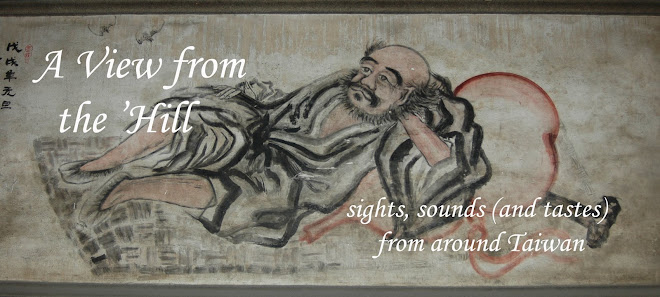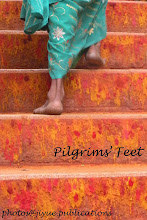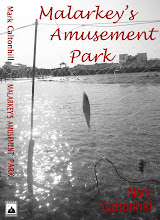By Mark Caltonhill
[first published in "Travel in Taiwan" 2010 (http://go2taiwan.net/must_see_kinmen.php)]
Whatever you do in Kinmen (and there is plenty to occupy visitors for days or even weeks), don’t call it part of Taiwan. While the local people are friendly and forgiving, they will gently point out that Kinmen, which is as close as 2 km from the mainland China coast but almost 230 km from Taiwan, was always and still is a part of China’s Fujian Province, albeit a part that is now under the jurisdiction of Taipei and not of Beijing.
Thus the island – actually an archipelago of two inhabited islands, Kinmen and Little Kinmen, and a number of small uninhabited ones — has a history entirely different from that of the island of Taiwan. This has colored its culture over the centuries and, as the Republic of China (ROC) and People’s Republic of China (PRC) draw closer with the post-Cold War thaw finally reaching East Asia, continues to do so.
For example, whereas Taiwan was a frontier territory in the 17th and 18th centuries to which Chinese immigrants fled to begin a new life, Kinmen was a part of the “older” China. Indeed, it later became a source of emigrants itself, a few of whom settled in the Penghu archipelago and Taiwan, many more of whom traveled to Japan, the Philippines, throughout Southeast Asia, and further afield. It is estimated that around half a million descendents of Kinmenese now live overseas, a figure that represents about 10 times the islands’ current population.
Their story, first as laborers and later as merchants, is told in detail (with good English translations) in a combined gallery and history museum housed in the old Jinshui Elementary School in Shuitou Village, located in the southwest of Kinmen’s main island. In fact, the whole of Shuitou – with its reconstructed mansions as well as the more rundown establishments – is like one large museum. This is because the fortunes made and either remitted or brought home by some of the expatriate sons of Kinmen account for the great profusion of traditional Fujianese-style upscale housing, often mixed with Baroque and other Western elements.
Stone lions have long been worshiped by local people to protect them and their crops from the strong winds
Another good place to stroll among these historic buildings is Shanhou Culture Village in Jinsha Township in the main island’s northeast. In fact several villages within the Kinmen National Park area, which encompasses a large portion of the two main islands, have been restored to their 19th- and early 20th-century glory using a “replace old with old” strategy, making a visit to Kinmen a unique step back in time almost unparalleled anywhere else in the ROC.
The northeast of the main island is its windiest area and thus has most of Kinmen’s iconic wind lions. These stone statues of varying size and design, some holding objects such as pens, balls or ribbons, have long been worshiped by local people to protect them and their crops from the strong winds. Sometimes there is one for a whole village, sometimes one per household. The Kinmen National Park administration regularly stages a fun event in which visitors buy a book and crayons and collect rubbings from a selection of lions, which they can then swap for a prize before leaving the island. In the days before the Chinese Civil War, Kinmen was known for its fishing and, less so, its agriculture. Today it is best-known in the region for its kaoliang (sorghum)-based alcohol and its artillery-shell knives. This change and these products are the result of yet another twist in the island’s history.
As the Chinese Civil War came to its stand-off conclusion in 1949, ROC forces relocated to Taiwan but managed to hold onto numerous islands just off the mainland China coast, including the Matsu group off the city of Fuzhou in northern Fujian and Kinmen off Xiamen in southern Fujian. Situated within sight of the coast and under a virtual state of siege, fishing became impossible in all but the most inshore island waters. Many local residents relocated to Taiwan, but for those who stayed a new livelihood was needed.
In what now must be seen as a stroke of genius, Kinmen-stationed General Hu Lian, originally from the sorghum-growing region of Shandong Province far off in northern China, recognized that the island’s soil and water were ideal for growing the grain and making traditional kaoliang liquor.
Today, the distillery near the island’s center – Kinmen Kaoliang Liquor Inc. – produces around 24 million liters of 38 percent and 58 percent liquor annually, generating around NT$12 billion in sales for local and national coffers, and making Kinmen one of only two counties in the ROC not in debt to the central government, according to information provided at the distillery’s visitor center.
Those sightseers with a taste for culinary tourism may also try the island’s famous “imperial tribute candy” at the sales center of the nearby Sheng Zu Food & Beverage Corp., where they can watch a dozen modern takes on the classic recipe being made by hand. The original flavor is peanut, however, and clearly Kinmen’s soils are suited to that crop too, as it is found in fields and smallholdings everywhere and can be seen drying on the courtyards in front of people’s homes. While in the countryside, also look out for the cows. They might not be a big deal to Westerners, but for Taiwanese used to water buffalo, the “yellow” cattle of Kinmen are quite unusual. Old-timers still use their beasts for plowing and other heavy work, and out of respect and gratitude do not eat beef. Younger people, however, now keep herds commercially, and beef jerky is another Kinmen specialty. Naturally, one of the most popular flavors is kaoliang beef jerky. One final culinary-related must-see is Master Wu’s Chin Ho Li Steel Knife Factory.
Third-generation knife maker Wu Tseng-dong is often to be found in his factory/showroom, and will hand-make a knife tailored to a visitor’s needs if not busy. His family started off making agricultural tools, but switched to knives after the infamous PRC shelling of Kinmen that began on August 23, 1958. Over the next 44 days around 500,000 artillery shells rained down, and perhaps the same number – though many contained propaganda materials and not explosives – over the next 20 years. Wu’s father and other blacksmiths found the shells’ steel to be good for high-quality knives for kitchen and other uses, and Wu first helped out after school before taking over the family business. Taken back to Taiwan proper by soldiers stationed on the island, the knives, as well as Wu’s factory, soon became a firm item on tourists’ itineraries.
The islands’ key location and role in the six-decade stand-off between the ROC and PRC is the most recent historical event coloring Kinmen’s culture. This has also provided innumerable visitor options not available elsewhere. Favorites include the propaganda broadcasting station at Mashan, the closest tip of northeast Kinmen island to China. Here, singer Teresa Teng and others once did live broadcasts over enormous loudspeakers to PRC citizens just two kilometers away, extolling the virtues of life in Free China.
Mashan also has fortifications and short tunnels. But for better examples of this, the extensive tunnels at Qionglin in the center of Kinmen island along the coast (which was the PRC People’s Liberation Army’s ideal point of attack) are well worth the NT$10 entrance fee. These tunnels were largely dug out and fortified by local residents themselves, using military-supplied cement, so they could move around in relative safety and therefore continue their lives as normally as possible even while under attack.
Wu Chin Ho’s father and other blacksmiths found the shells’ steel to be good for high-quality knives for kitchen and other uses
For an introduction to military fortifications, Yongshi Fort on Little Kinmen, the other inhabited island, is recommended. Here are gun emplacements, an arsenal, dormitories, officers’ rooms, kitchen facilities, and tank emplacements, all underground and all connected by miles of tunnels. Visitors may even ride their bicycles through the tunnel from Yongshi Fort to the nearby Tiehan Fort if circumnavigating Little Kinmen by bicycle.
That the ROC still retains Kinmen (as well as Matsu) shows the success of these fortifications. In this it has done better than Koxinga, who held these islands and the nearby archipelago islands controlled by the PRC for years as a base to resist and harass the new Manchurian Qing dynasty based in Beijing in the 17th century, but who ultimately had to retreat further, to Taiwan, starting a new chapter in that island’s history. Today’s topic has been Kinmen’s history, and hopefully the people of this now peaceful archipelago will forgive their story appearing in a magazine called “Travel in Taiwan” — the name “Travel in Taiwan, Matsu, and Kinmen” would be just a bit too much of a mouthful.
photos copyright Travel in Taiwan 2010
text copyright Travel in Taiwan and Jiyue Publications 2010,2012












No comments:
Post a Comment